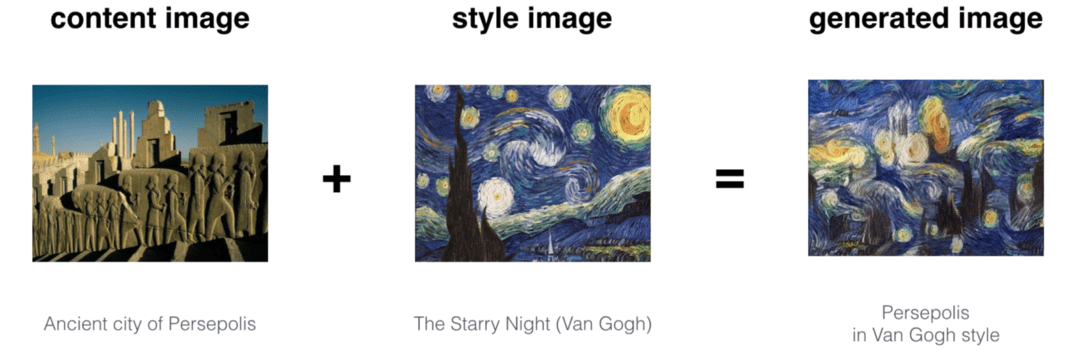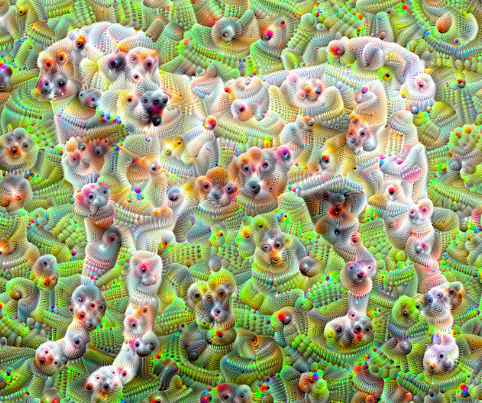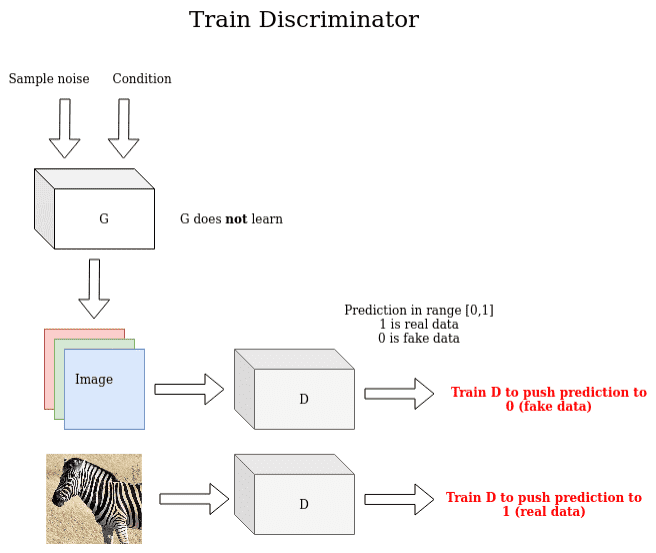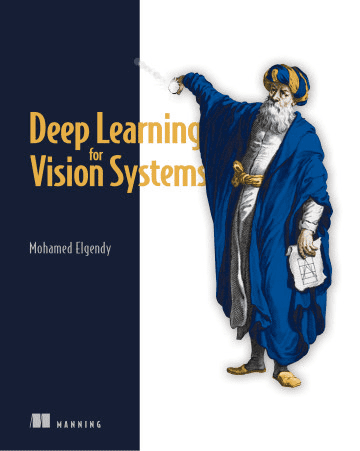Here you will find the best online courses, books and blogs to learn how to apply Deep Learning in Computer Vision applications.
Deep Learning for Computer Vision by the University of Michigan (FREE)
Justin Johnson does a phenomenal job outlining all aspects of Deep Learning from a computer vision perspective. You will learn everything you need to know from fundamental concepts such as Backpropagation and Convolutional Neural Networks to Object Detection and Image segmentation. A must for beginners
Instructors: Justin Johnson
Topics that caught our eye:
3D Vision
Reinforcement Learning
Generative models
Convolutional Neural Networks by DeepLearning.ai
A part of the Deep Learning Specialization by Coursera, this course is designed to teach you everything about Convolutional Neural Networks and how they are applied in images and videos. You’ll start with the Foundations of Convolutional Neural Networks, then you’ll see some case studies, you’ll continue with Object Detection. Finally, you’ll dive into face recognition & Neural Style Transfer (NST).
NST is an optimization technique used to take two images—a content image and a style reference image (such as an artwork by a famous painter)—and blend them together so the output image looks like the content image, but “painted” in the style of the style reference image.
 Source:xpertup
Source:xpertup
Instructors: Andrew Ng, Younes Bensouda Mourri
TensorFlow Developer Professional Certificate and TensorFlow: Advanced Techniques Specialization by DeepLearning.ai
Here we include two courses in one section because one is a continuation of the other. In particular, if you are interested only in Computer vision, focus on the following sub-courses:
As you may have guessed, you’ll learn how to solve real-world computer vision applications with Tensorflow. So be prepared for a thorough analysis of the framework and its intricacies.
Instructors: Laurence Moroney, Eddy Shyu
Disclosure: Please note that some of the links in this post might be affiliate links, and at no additional cost to you, we will earn a commission if you decide to make a purchase after clicking through.
Introduction to Computer Vision by Georgia Tech (Udacity)
This course focuses primarily on the fundamentals of Computer Vision and doesn’t spend much time on Deep Neural Networks. However, we think that one should always learn the basic principle before continuing into advanced concepts. So if you agree with us, you should definitely check out this course.
Example topics:
Camera models and view
Lighting
Tracking
Image motion
Instructors: Aaron Bobick, Irfan Essa, Arpan Chakraborty
CS231n: Convolutional Neural Networks for Visual Recognition by Stanford
CS231 is one of the most well-known courses in Computer Vision and probably one of the most comprehensive. The public video lectures on Youtube are from 2017 so it might feel a bit outdated at times but that doesn’t mean that it’s not extremely well-written and conceived. A big plus is the incredible notes that one can find on the course’s website.
Example lectures:
CNN architectures
Detection and Segmentation
Deep Reinforcement Learning
Adversarial examples and adversarial training
Instructors: Fei-Fei Li, Justin Johnson, Serena Yeung
Become a Computer Vision Expert Nanodegree
Udacity’s main computer vision program is a hands-on course that combines theoretical concepts with practical tutorials and real-life projects. Intermediate knowledge in Python, statistics and machine learning is required. It has an admittedly high cost but it compensates with technical mentor support, a big student community, and personalized career services.
Projects:
Facial keypoint detection
Automatic image captioning
Landmark detection and tracking
Instructors: Sebastian Thrun, Jay Alammar, Luis Serrano
Python for Computer Vision with OpenCV and Deep Learning
This course by Udemy has a twofold focus: it explores basic computer vision principles as well as advanced deep learning techniques. You will use NumPy, OpenCV, Tensorflow/Keras to solve a variety of practical problems.
Example lessons:
Image basics with OpenCV
Video basics with Python and OpenCV
Object Tracking
Deep learning for computer vision
Instructors: Jose Portilla
Deep Learning and Computer Vision A-Z™: OpenCV, SSD & GANs
Another course by Udemy, which deals heavily with deep learning architectures. You will learn about convolutional neural networks, single short detectors and generative adversarial networks.
Example lessons:
Face detection with OpenCV
Object detection with SSD
Image generation with Generative Adversarial Networks (GANs). GANs refer to two neural networks that play a min-max game throughout training (gradient ascend descend), namely the generator G and the Discriminator D. G’s input is random noise that is sampled from a distribution in a small range of real numbers. For image generation, G’s output will be a generated image. The main difference is that now we focus on generating representative examples of a specific distribution (i.e. dogs, paintings, street pictures, airplanes, etc.) The discriminator is nothing more than a binary classifier that focuses on learning the distribution of the class.
Instructors: Kirill Eremenko, Hadelin de Ponteves, Ligency Team
Deep Learning for Vision Systems
A 480 pages book that covers everything you need to know about modern computer vision systems. It is divided into 3 different parts: Deep Learning foundation, Image classification and detection, generative models and visual embeddings. A great choice for intermediate Python programmers and deep learning beginners.
Chapters that caught our interest:
Advanced CNN architectures: LeNet, AlexNet, VGGNet, Inception
You only look once (YOLO). The YOLO family of architectures are a series of deep learning models designed for fast object detection, developed by Joseph Redmon, et al.
Deepdream and Neural Style Transfer. DeepDream is an experimental idea that aims to visualize neural network patterns. These patterns are learned by a neural network during training. In practice, DeepDream enhances the patterns it sees in an image.
Visual embeddings
 An example of a deepdream image. Source: Tensorflow tutorials
An example of a deepdream image. Source: Tensorflow tutorials
Author: Mohamed Elgendy
Computer vision Blogs
Learn OpenCV - Satya Mallick
Tombone's Computer Vision Blog - Tomasz Malisiewicz
Computer vision for dummies - Vincent Spruyt
Andrej Karpathy blog - Andrej Karpathy
Computer Vision Talks - Eugene Khvedchenya
Computer Vision Basics with Python Keras and OpenCV - Jason Chin (University of Western Ontario)
An Introduction To 3D Computer Vision Techniques and Algorithms By Bogusław Cyganek (free ebook)
Other Computer Vision Courses
The following list is based on the awesome Github page of @jbhuang0604:
EENG 512 / CSCI 512 - Computer Vision - William Hoff (Colorado School of Mines)
Visual Object and Activity Recognition - Alexei A. Efros and Trevor Darrell (UC Berkeley)
Computer Vision - Steve Seitz (University of Washington)
Visual Recognition Spring 2016, Fall 2016 - Kristen Grauman (UT Austin)
Language and Vision - Tamara Berg (UNC Chapel Hill)
Convolutional Neural Networks for Visual Recognition - Fei-Fei Li and Andrej Karpathy (Stanford University)
Computer Vision - Rob Fergus (NYU)
Computer Vision - Derek Hoiem (UIUC)
Computer Vision: Foundations and Applications - Kalanit Grill-Spector and Fei-Fei Li (Stanford University)
High-Level Vision: Behaviors, Neurons and Computational Models - Fei-Fei Li (Stanford University)
Advances in Computer Vision - Antonio Torralba and Bill Freeman (MIT)
Computer Vision - Bastian Leibe (RWTH Aachen University)
Computer Vision 2 - Bastian Leibe (RWTH Aachen University)
Computer Vision Pascal Fua (EPFL)
Computer Vision 1 Carsten Rother (TU Dresden)
Computer Vision 2 Carsten Rother (TU Dresden)
Multiple View Geometry Daniel Cremers (TU Munich)
* Disclosure: Please note that some of the links above might be affiliate links, and at no additional cost to you, we will earn a commission if you decide to make a purchase after clicking through.

